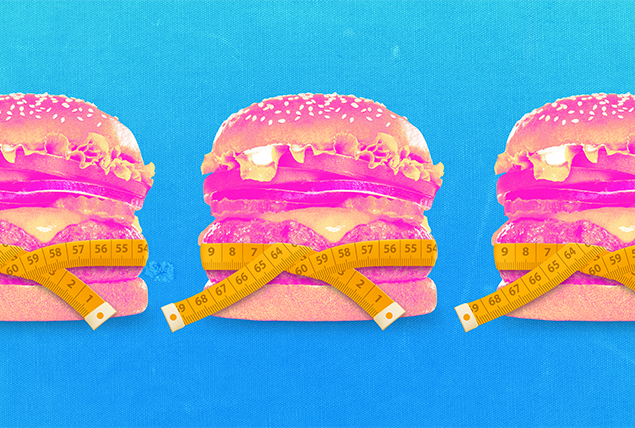Get the Facts About Binge Eating Disorder

Eating disorders are debilitating, often severe and far more common than you may expect. Binge eating disorder is the most common form, with more people experiencing binge eating than anorexia and bulimia combined. It can affect multiple aspects of human health, including mental well-being, sexual health and personal relationships. It can be life-threatening if not treated.
If you or someone you care about is dealing with binge eating disorder, it's important to know the causes, risks and factors involved. Get the facts about binge eating disorder.
What is binge eating disorder?
Binge eating disorder (BED) is severe and life-threatening. It is characterized by consuming an unusually large amount of food in a brief period while feeling out of control and distressed by the act.
"Foods that are consumed during a binge episode are typically high in calories, fat and/or sugar, and are normally considered as foods meant to be consumed in moderation and balance," said Julia Cassidy, M.S., R.D., a registered dietitian and the vice president of clinical nutrition at Alsana, a holistic eating disorder clinic with locations around the country. "After eating, the person might feel uncomfortably full and also experience shame, distress or guilt."
BED has various cognitive effects related to impulsivity, compulsivity, decision-making and executive function, according to Cassidy. These are the mental processes that help us all to plan, focus attention, remember and juggle multiple tasks.
"An eating binge can be planned, or it can be more impulsive. The episode can last an hour or longer," Cassidy said.
Binge eating is considered a disorder when it occurs at least once a week and lasts more than three months.
Other signs of the disorder include:
- Eating more quickly than normal
- Eating large amounts of food when the individual doesn't feel hungry
- Not feeling comfortable eating with others, opting instead to eat alone because of embarrassment about how much food is being consumed
- Eating an unreasonably large amount of food in a short period
If you have been diagnosed with this order, or have a loved one who has, know that it is treatable. Recovering from binge eating disorder is a reality.
Risks, causes and triggers of binge eating disorder
Genetics, dieting—which is more common in women—and a history of trauma, particularly sexual abuse, can increase someone's risk of developing a binge eating disorder, according to Melodie Simmons, D.H.A., L.P.C., a certified eating disorder specialist and the executive director of the Center for Discovery in Mesa, Arizona.
"Genetics load the gun and society pulls the trigger," Simmons said.
Each person's triggers will be different when it comes to bingeing episodes.
"Binge eating triggers can include stress, anxiety, boredom, childhood trauma, poor body image and more," Cassidy said. "Having foods nearby that are regularly consumed during a binge can also be a trigger."
One common trigger for binge eating is dieting.
"This is because when on a diet, whether that be a formal diet or certain restrictive 'rules' about an individual's eating pattern, an individual can be undereating and also develop a lot of shame around their eating habits," said Jenn Baswick, R.D., a registered dietitian and intuitive eating coach with an online practice called The Intuitive Nutritionist.
Baswick explained that survival instincts triggering a starvation-like response may kick in when the body is not getting enough energy from food. Those instincts may drive the individual to seek more food to maintain an adequate energy intake for their needs.
"Diets also can increase feelings of guilt and shame when an individual has 'broken' the food rules they try to follow, which can trigger a binge," she said.
Types and stages of binge eating disorder
People with binge eating disorder meet three of the following criteria:
- Eating rapidly
- Eating until they are overly full
- Eating when they are not hungry
- Eating alone
- Feeling guilty and/or depressed after eating
"Someone can have a mild, moderate, severe or extreme binge eating disorder," Cassidy said. "This is determined by the frequency of binge episodes."
Some people binge and then purge afterward. This type of binge eating can also be bulimia, which is classified as an independent eating disorder, closely tied to binge eating. The method of binging or binging and purging can vary as well.
"For the binge-purge type, 'purging' could consist of self-induced vomiting (purging), over-exercise or use of diuretics," Simmons said.
Socioeconomic and cultural factors
Triggers for BED can be complex and unique to the individual. These triggers stem from various biological, psychological and sociocultural factors.
Binge eating disorder is linked to a desire for weight loss. Approximately 30 percent of those seeking weight loss treatments also show signs of binge eating disorder, according to the National Eating Disorders Association (NEDA). Weight loss is typically a goal for people who are unhappy with their body, often due to social and cultural pressures to conform to a specific body type.
African American women are often misdiagnosed and are not asked about their eating routine, according to Simmons and the prevailing research. Additionally, according to research published in the Journal of Clinical Medicine, perceived discrimination can contribute to the risk of developing binge eating disorders in African American women.
As well, people who are a straight size and have smaller bodies are not often asked about binge eating behaviors, which may also contribute to underdiagnosis.
"Poverty and food insecurity can also be a factor in BED," Simmons said.
These factors could be due to the increased stress and trauma of these circumstances, or they could be a psychological and physiological response to going without food and not knowing when you may be able to eat next.
Binge eating disorder facts, stats and studies
Binge eating disorder is the most common eating disorder in the United States, with 3.5 percent of women and 2 percent of men being affected at some point during their lives. That makes BED more than three times more common than anorexia and bulimia combined, according to the National Eating Disorders Association.
Approximately 40 percent of those with BED are male and 60 percent are female. BED typically starts in the late teens or early 20s but can manifest younger or older.
A systematic review looked at the health-related quality of life of those with BED and other eating disorders. It found that eating disorders, including BED, have a serious impact on an individual's health-related quality of life.
"Interestingly, although these individuals have a greater risk of health-related problems, many individuals rarely had any treatment specific to their eating disorder," Baswick said. "This study outlines the importance of someone seeking treatment and care should they be struggling with their relationship with food."
Baswick said BED can also impact one's general quality of life, according to research. A review that looked at the impact of BED on adolescents found that 62.6 percent of adolescents with BED reported functional impairment in terms of household chores, school or work, family life and social life.
"If you have or think you may have BED, you deserve to heal and overcome binge eating," Baswick said. "Please seek support and have faith that you can improve your relationship with food."
Read our follow-up BED stories that will discuss symptoms, testing, when to seek help and how to recover from binge eating disorder.


















